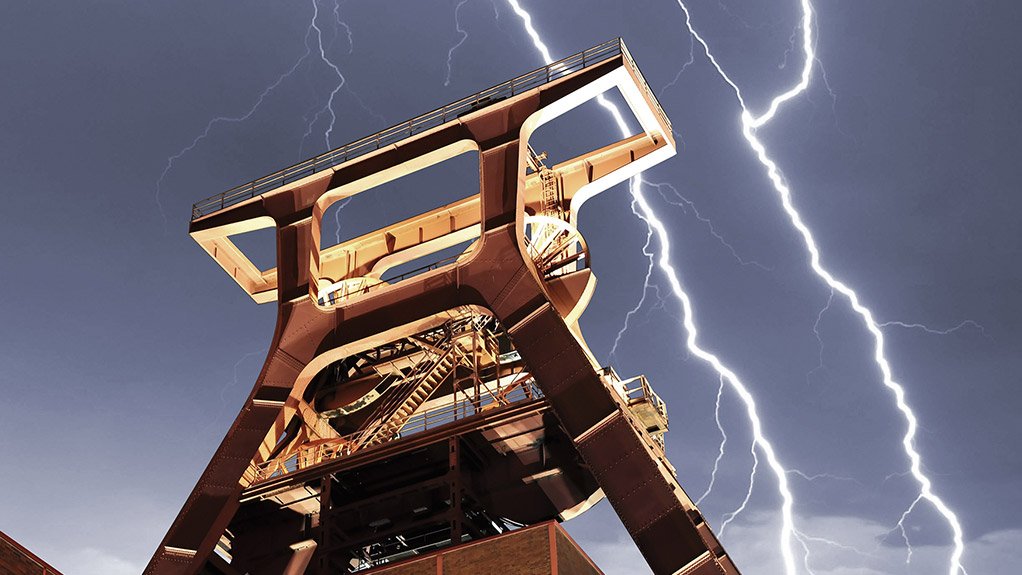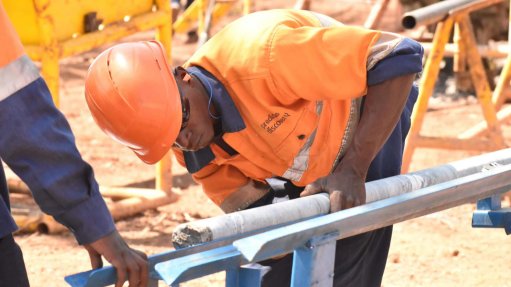Miners advised to protect conveyors against lightning


FORCE OF NATURE Lightning is an unpredictable force of nature, which is a constant danger to structure, electronic equipment and human life
Mining conveyors are prone to being struck by lightning, owing to the vast area they cover, says earthing systems, lightning, surge and overvoltage protection specialist Advanced Lightning Protection financial manager Lee-Anne Chapman.
Chapman describes a lightning bolt as “basically a large conductor with a massive electromagnetic field around it that can extend for up to 1 km from the actual strike”, and that all electronic and electrical equipment will be exposed to the magnetic field during the strike, as well as to a second, collapsing magnetic field once the strike is over.
If lightning were to strike within 100 m of equipment, the induced voltages could be up to 2 000 V/m, which is why equipment could suffer damage during a lightning storm, even though it might not have been struck directly, she adds.
Chapman tells Mining Weekly that the installation of a lightning protection system should be preceded by a risk analysis, conducted in accordance with South African National Standards (SANS) specifications.
“This will determine whether lightning protection is required and what level of lightning protection must be used in the design to limit the risk of damage accordingly.”
Fitting Design
Should the risk analysis support the installation of a lightning protection system, which includes soil resistivity surveys, the protection level can then be calculated, says Chapman.
She adds that the design of earthing and lightning protection systems must be performed in accordance with SANS 62305, 10313 and 10199 specifications.
The design of a conveyor’s lightning protection generally consists of a structural lightning protection system, an earthing system, an electrical earthing system, a surge protection system and the equipotential bonding of all protection systems, explains Chapman.
“The electrical earthing system must be designed to allow for the safety devices to operate correctly and for the dissipation of any fault currents that might occur. Its purpose is to save equipment from damage and to protect personnel from injury,” she elaborates.
She adds that, for additional protection of electronic equipment, it is essential for the power supply, telecommunications and data lines to be equipped with adequate surge protection devices. Further, it is vital that the entire electronic system is at the same potential to ensure that the lightning protection is effective.
Regular Testing
Chapman tells Mining Weekly that SANS 62305 states that it is necessary for lightning protection system installations to be inspected and tested regularly to repair any damage.
Strict quality-control measures need to be adhered to when installing such systems and all the material used needs to comply with SANS standards, she notes.
A maintenance strategy should be in place to check that the earthing system and surge protection devices remain in good working order, says Chapman.
“Earthing systems degrade with time, owing to corrosion, theft and accidental disconnection and, therefore, need to be inspected on a regular basis. Surge protection devices also degrade with use and should be maintained and replaced accordingly.”
The strategy should also include checking all surge protection devices after big storms and the earthing system after the summer lightning season.
Advanced Lightning Protection, which is a partner of lightning protection, surge protection and safety equipment company Dehn Africa, has been installing lightning protection systems on mining conveyors since its inception in 2004. The company has completed projects at, for example, diversified miner BHP Billiton’s Khutala colliery and mining major Anglo American’s Isibonelo colliery, both in Mpumalanga, and Glencore’s Kroondal chrome mine, in the North West.
Comments
Press Office
Announcements
What's On
Subscribe to improve your user experience...
Option 1 (equivalent of R125 a month):
Receive a weekly copy of Creamer Media's Engineering News & Mining Weekly magazine
(print copy for those in South Africa and e-magazine for those outside of South Africa)
Receive daily email newsletters
Access to full search results
Access archive of magazine back copies
Access to Projects in Progress
Access to ONE Research Report of your choice in PDF format
Option 2 (equivalent of R375 a month):
All benefits from Option 1
PLUS
Access to Creamer Media's Research Channel Africa for ALL Research Reports, in PDF format, on various industrial and mining sectors
including Electricity; Water; Energy Transition; Hydrogen; Roads, Rail and Ports; Coal; Gold; Platinum; Battery Metals; etc.
Already a subscriber?
Forgotten your password?
Receive weekly copy of Creamer Media's Engineering News & Mining Weekly magazine (print copy for those in South Africa and e-magazine for those outside of South Africa)
➕
Recieve daily email newsletters
➕
Access to full search results
➕
Access archive of magazine back copies
➕
Access to Projects in Progress
➕
Access to ONE Research Report of your choice in PDF format
RESEARCH CHANNEL AFRICA
R4500 (equivalent of R375 a month)
SUBSCRIBEAll benefits from Option 1
➕
Access to Creamer Media's Research Channel Africa for ALL Research Reports on various industrial and mining sectors, in PDF format, including on:
Electricity
➕
Water
➕
Energy Transition
➕
Hydrogen
➕
Roads, Rail and Ports
➕
Coal
➕
Gold
➕
Platinum
➕
Battery Metals
➕
etc.
Receive all benefits from Option 1 or Option 2 delivered to numerous people at your company
➕
Multiple User names and Passwords for simultaneous log-ins
➕
Intranet integration access to all in your organisation


















